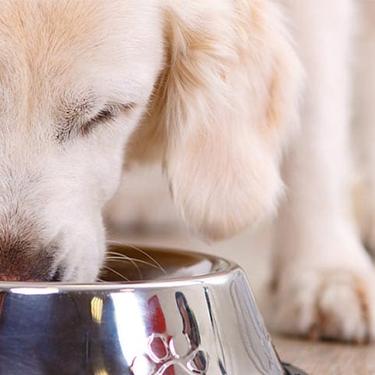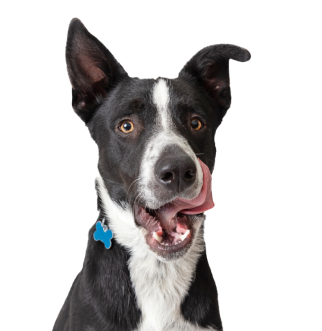
-
Find the right food for your pet
Take this quiz to see which food may be the best for your furry friend.
Find the right food for your pet
Take this quiz to see which food may be the best for your furry friend.
Featured products
 Small & Mini Savory Stew with Chicken & Vegetables Dog Food
Small & Mini Savory Stew with Chicken & Vegetables Dog FoodA delicious complement to the nutrition of Science Diet Small & Mini 7+ dog food
Shop Now Adult Healthy Cuisine Roasted Chicken, Carrots & Spinach Stew Dog Food
Adult Healthy Cuisine Roasted Chicken, Carrots & Spinach Stew Dog FoodDelicious roasted chicken paired with tender vegetables in a succulent stew
Shop Now Adult 7+ Perfect Digestion Chicken, Whole Oats & Brown Rice Recipe Dog Food
Adult 7+ Perfect Digestion Chicken, Whole Oats & Brown Rice Recipe Dog FoodScience Diet's breakthrough nutrition supports ultimate digestive well-being & healthy microbiome for dogs age 7+
Shop NowFeatured products
 Adult 7+ Senior Vitality Chicken & Vegetable Stew Cat Food
Adult 7+ Senior Vitality Chicken & Vegetable Stew Cat FoodImproves Everyday Ability to Get Up & Go
Shop Now Adult Savory Entrée Can Variety Pack Cat Food
Adult Savory Entrée Can Variety Pack Cat FoodPrecisely balanced nutrition with the delicious taste of savory minced chicken to help fuel the energy needs of cats during the prime of their life
Shop Now Adult 7+ Tender Tuna Dinner Cat Food
Adult 7+ Tender Tuna Dinner Cat FoodWith delicious chunks in a decadent gravy
Shop Now -
Dog
- Dog Tips & Articles
-
Health Category
- Weight
- Food & Environmental Sensitivities
- Urinary
- Digestive
- Joint
- Kidney
-
Life Stage
- Puppy Nutrition
- Adult Nutrition
- Senior Nutrition
Cat
- Cat Tips & Articles
-
Health Category
- Weight
- Skin & Food Sensitivities
- Urinary
- Digestive
- Kidney
-
Life Stage
- Kitten Nutrition
- Adult Nutrition
Featured articles
 Do Dogs and Cats have Belly Buttons?
Do Dogs and Cats have Belly Buttons?Learn whether cats & dogs have belly buttons like humans, what the function is, and if there are any health concerns associated with it.
Read More Does My Pet Hate Me?
Does My Pet Hate Me?Learn tips for bonding with your pet if you've ever thought, 'My dog doesn't like me, or 'Why do I have a standoffish cat?'
Read More Why Are Dogs and Cats So Cute?
Why Are Dogs and Cats So Cute?If waggy puppy dog tails and furry kitten yawns make you swoon, you're not alone. Why are cats so cute? And, dogs too! Let's find out!
Read More -


Determining how to give a dog a pill can sometimes be a challenge. But as a dog parent, learning how to get a dog to take a pill is an important skill to master, and luckily enough, a rather simple one in most cases.
Most dogs don't comply when it comes to taking their medication in pill form simply because they don't enjoy the taste of the pill. With this in mind, what can pet parents do to make this process go more smoothly? Read on to learn some veterinarian-approved tricks of the trade.
How To Give a Dog a Pill: The Meatball Method
While dogs don't need a spoonful of sugar to make the medicine go down, the same concept applies here. If your vet gives the go-ahead for the medication to be given with food, you can hide the capsule or tablet in the center of a homemade treat. You can use canned food, lean meat, cheese, peanut butter or any other moldable food your pup loves, and form a meatball, cheese ball or peanut buttery treat around the pill. Lean meat or canned dog food is ideal here to watch calories so medicating your pup doesn't lead to weight gain. There are also specially formulated dog treats that are made specifically for hiding pet treats that you can often find at your local vet or pet store. It is not recommended to use raw meat when giving your dog the pill as raw meat can come with its own issues such as bacteria like salmonella.
Many dogs will happily accept the first meatball with gratitude, making this the simplest way to give an oral pill to most dogs. For those more skeptical pups, you may have to give a plain pill-free meatball to earn their trust and then sneak in the pill later.
When Food Isn't an Option
When the pill can't be given with food or you have a super sniffer who spits it out, learning how to give a dog a pill may require that you take matters into your own hands — literally. Use these steps for guidance:
- Stand next to your dog ensuring that you're both facing the same direction. Then, place a treat in your dominant hand.
- While placing your non-dominant hand on your dog's upper jaw, with your thumb on one side and your fingers on the other, use your dominant hand to pull down the lower jaw. You'll also have the treat in this hand. Try to keep in mind that a dog's mouth opens by the lower jaw dropping down. Try not to pry your dog's mouth open by pulling up.

- To acclimate your dog to this new experience, now offer the treat by placing it toward the base of the tongue. You'll have to temporarily remove your hand from the lower jaw to pop the treat in toward the back of the tongue, so try to be prompt. This does require your hand to be in your dog's mouth momentarily, so only do this if you're very cautious as there's an inherent risk of your dog biting you during this maneuver. The goal of giving them a treat this way is to help your dog relax, as they'll learn this isn't a terrible experience and a little cooperation will be to their benefit. Depending on how much of a challenge these first steps were, you're free to repeat with treats — or even regular dog food — as a way of training your pup to take a pill without a fight.
- When you and your pup have mastered the "open jaw and get a treat" maneuver, it's time for the main act, substituting the pill in the treat's place. If possible, place the pill toward the back of the tongue, ideally at the base.
- Always give verbal praise and a treat after your dog successfully takes the medication. For particularly anxious dogs, the repeated training with a treat instead of the pill at first and praising each time they accept the treat will help desensitize your pup to the whole pill experience.
Because this technique requires a little bit more skill, it may be worthwhile to ask your veterinarian to do a demonstration before attempting this on your own. Once you've successfully placed the pill in your dog's mouth, do your best to keep your pup's mouth closed by quickly replacing your dominant hand back on the lower jaw to allow gentle control. Blowing onto your dog's nose and stroking their throat softly will encourage swallowing. Most dogs will lick their nose after they've swallowed a pill. For those more discreet dogs who keep you wondering, just keep an eye on them for a moment afterward to see if they spit out the evidence.


Tasty Tips
Other Forms of Medicine
If you're still not able to get your dog to take their pill, other forms of the medication may be necessary. For example, your vet may prescribe liquid medications; liquids can be given via a syringe (or dropper provided with the medication) into the rear of your dog's mouth by inserting the tip of the syringe near the back teeth on either side. The cheek pouch is another good spot to aim for with liquid medications. The Merck Veterinary Manual explains that holding your dog's head pointing partially upward can help prevent spills — a particularly important tip when learning how to get a dog to take a pill. It's important to have an open and honest line of communication with your veterinarian if you are struggling to administer medications, so they can help tailor your pet's treatment plan in a way that keeps both you and your pet relaxed and safe. Even if they can't prescribe a different formulation of a medication, they may have their own tips and tricks they've learned over the years they can share with you.
If you've struggled with giving your dog medication in the past, be sure to use these steps to ensure you understand how to give a dog a pill.


Dr. Laci Schaible is a small animal veterinarian, veterinary journalist, and a thought leader in the industry. She received her Doctor of Veterinary Medicine from Texas A&M University and her Masters in Legal Studies from Wake Forest University.
Related products
Related articles

Learn the the dangers of feeding your dog chocolate, which types are most dangerous, and what to do if you discover that they have consumed chocolate.

Learn about choosing the right dog food to help ensure your adult dog will receive the correct balance of nutrition.

Proper nutrition for your pregnant or nursing dog is vital to her and her puppy's health. Learn what you should do provide her with the proper nutrients.

Learn how today's wet dog food blends have gotten a face lift, and how you'll provide your dog the nutrition he needs in the form he loves.

Put your dog on a diet without them knowing
Our low calorie formula helps you control your dog's weight. It's packed with high-quality protein for building lean muscles, and made with purposeful ingredients for a flavorful, nutritious meal. Clinically proven antioxidants, Vitamin C+E, help promote a healthy immune system.
Put your dog on a diet without them knowing
Our low calorie formula helps you control your dog's weight. It's packed with high-quality protein for building lean muscles, and made with purposeful ingredients for a flavorful, nutritious meal. Clinically proven antioxidants, Vitamin C+E, help promote a healthy immune system.

